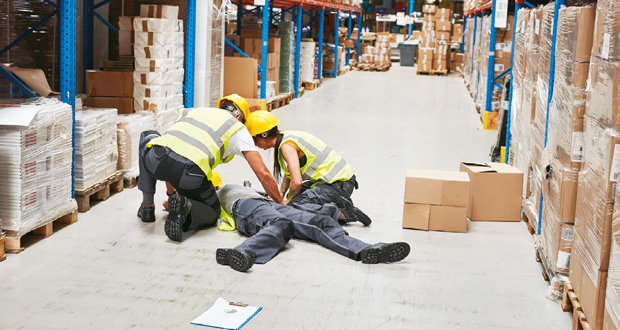 HSE’s fatal injury statistics for 2022 to 2023 suggest that workplaces are no safer than in 2016, says Nick Wilson, Director of Health and Safety at WorkNest
HSE’s fatal injury statistics for 2022 to 2023 suggest that workplaces are no safer than in 2016, says Nick Wilson, Director of Health and Safety at WorkNest
According to the most recent data from the HSE a total of 135 workers tragically lost their lives as a result of work-related accidents between April 2022 and March 2023.
This highlights a disheartening stagnation in the ongoing efforts to reduce work-related fatalities in the UK and raises the question – has workplace health and safety plateaued and why?
When we look at the raw figures, the numbers fluctuate over the years with no clear reason. They have risen steadily from 2016 but decreased somewhat dramatically in 2019/20. They then rebounded to pre-pandemic levels in 2020/21, before dropping off again last year to below 2016 levels. Now at the present day, the numbers are reminiscent of 2016.
Last year’s figures suggested progress was being made, so it should be a concern that this positive downward trend in fatalities was not sustained, according to the regulators latest report.
DELVING DEEPER IN TO THE NUMBERS – WHAT DO WE KNOW?
The sectors with the highest number of work-related fatalities in 2022/23 were construction, agriculture, forestry and fishing, and manufacturing.
The construction sector had the highest recorded fatalities and experienced a notable increase in fatalities from 29 to 45 compared to last year. The five-year average for fatal injuries in construction is 37, meaning this year’s figure isn’t just higher than last year’s figure – it’s higher than the norm.
In agriculture, forestry and fishing, there was a marginal year-on-year reduction in fatalities from 23 to 21. However, if you take into account the number of workers in each sector, it continues to have the highest fatal injury rate at 7.87 deaths per 100,000 workers, followed by waste and recycling (5.02) and construction (2.10).
More optimistically, the manufacturing sector saw a reduction in fatalities of nearly a third (32 per cent) in 2022/23 – down from 22 in 2021/22 to 15. The sector’s five-year average is 19, indicating that progress is being made. It’s important to note that, despite ranking amongst the top three sectors with the highest total number of fatalities, the fatal injury rate in manufacturing of 0.57 is much lower than others.
Five-year averages tell us much more than simply looking at the year previous. We can uncover more trends including that; agriculture, forestry and fishing, manufacturing, and administrative and support services all show signs of becoming safer. Meanwhile, construction, transportation and storage, wholesale, retail and motor repair, and waste and recycling, have declining safety standards.
Other notable points we can uncover from analysis of the data are:
- Fall from height fatalities persist: Falls from height continue to be the number one cause of fatal injury at work, claiming the lives of 40 workers in 2022/23 – 30 per cent of the total figure. This represents a 38 per cent increase on last year’s figure (29).
- 29 workers were killed after being struck by a moving (including flying/falling) object – up from 18 last year – and a further 20 fatalities were caused by being hit by a moving vehicle (down from 23 last year).
Combined, these three types of accidents consistently account for more than half of all fatal injuries to workers and this is a trend that has persisted since 2001/02.
- Deaths due to coming into contact with moving machinery and being trapped by something collapsing/overturning are down compared to the five-year average at nine and 12 fatalities respectively.
- Male and older workers are most at risk: The overwhelming majority (96 per cent) of those killed in work-related accidents in 2022/23 were male. In addition, 25 per cent of fatal injuries in 2022/23 were to workers aged 60 and over despite such workers making up just 11 per cent of the workforce.
This age disparity in work-related fatalities highlights the importance of businesses addressing the unique risks faced by different demographic groups
HOW CAN WE ADDRESS WORKPLACE SAFETY COMPLACENCY?
Speaking generally, accidents are often caused by a combination of factors, including a culture of complacency and poor leadership.
To address this issue, we need to look at the current and varying rate of appreciation and understanding for health and safety within the workplace. Workplace surveys and consultations would help to determine the level of this and then point us in the direction of the solutions – which will almost always be more than one.
These solutions will often include:
- Promotion of good health and safety standards and the processes involved
- Informing employees of the risks they are exposed to (and the methods in place to reduce this)
- Making training and learning a key part of roles
- Ensuring those at all levels – from CEO to senior managers and supervisors to front line staff – are aware of their responsibilities, delegating tasks where necessary and involve them in the health and safety auditing process allowing them to take ownership.
 In association with www.worknest.com
In association with www.worknest.com





